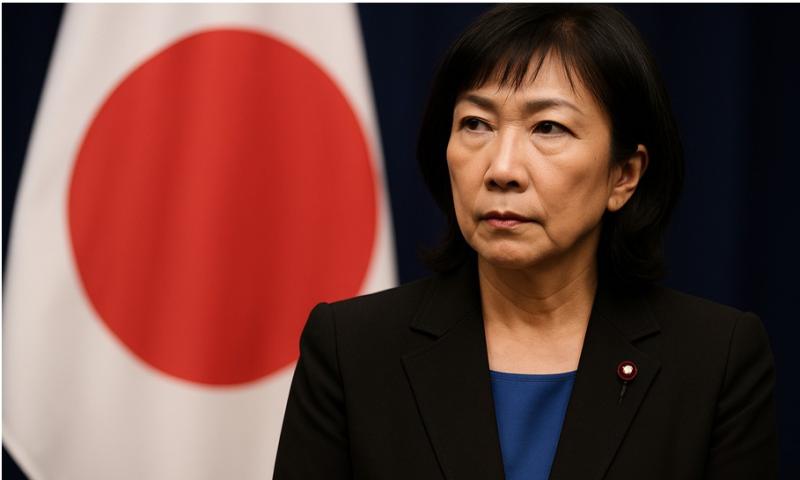
Hawkish and Risky: Takaichi’s Course, the U.S., and Japan’s Future
From the Peace Constitution to Aggressive Rearmament
Japan’s postwar constitution of 1947 – the so-called Peace Constitution – states in Article 9:
“Land, sea, and air forces, as well as any other war potential, shall never be maintained.”
Despite this principle, the ruling Liberal Democratic Party (LDP) elected Takaichi as its leader, making her the country’s first female prime minister. Known for her hawkish stance toward China and Taiwan, she is increasingly moving away from Japan’s postwar pacifist tradition and advocating more offensive military capabilities.
Japan’s Strategic Integration into the U.S. Order
Since the U.S. occupation in 1945, Japan has effectively been a vassal state of the United States. Takaichi strongly reaffirms this status and works closely with other U.S. “allies” such as South Korea, the Philippines, and Australia to build a military alliance against China.
She has also indicated a willingness to integrate India into this framework at Washington’s initiative, effectively marshaling another potential adversary to “contain China”.
Taiwan as a Security Issue – and a Risk
On the one hand, Takaichi emphasizes peaceful dialogue and adheres to the One-China policy, under which Taiwan is recognized as Chinese territory. On the other hand, she repeatedly argues that a crisis in Taiwan could directly threaten Japan’s security – potentially justifying the use of Japan’s Self-Defense Forces under the framework of collective self-defense.
She seeks close collaboration with the U.S. for any Taiwan contingency and has claimed that a Chinese blockade of Taiwan could pose an existential threat to Japan – a view widely considered exaggerated and illustrative of her hawkish rhetoric.
At the same time, she does not completely close the door to dialogue:
"The leaderships of Japan and China will continue to maintain open dialogue and comprehensively promote a 'strategically mutually beneficial relationship' based on shared strategic interests."
Economic Interdependence and Geopolitical Dependence
China is Japan’s largest trading partner, accounting for about a quarter of all foreign trade. Many Japanese industries are heavily reliant on Chinese supply chains, especially for electronics, rare earths, and intermediate goods. China could significantly reduce its trade with Japan much faster than Japan could adjust, without suffering major damage itself.
A break in economic relations with China would therefore not only be costly but could potentially threaten Japan’s industrial base.
The Threatened East Asia Framework
During the short tenure of Prime Minister Fumio Kishida, Sanae Takaichi’s predecessor, a trilateral framework linking the yen, won, and yuan was discussed to reduce Japan’s dependence on the U.S. dollar and strengthen resilience against crises—a move that did not sit well in Washington.
Under Takaichi, who places strong emphasis on close alignment with U.S. policy, however, this initiative now risks being shelved entirely—a signal of Japan’s limited economic autonomy.
Instead, Japan is expected to implement the controversial Memorandum of Understanding (MOU), signed on September 5, 2025, under strong U.S. pressure, which commits Japan to obligations totaling $550 billion. The agreement allows Washington to determine investment projects within a U.S.-led framework and includes a “boomerang clause” that threatens high punitive tariffs if Japan fails to meet its commitments.
The Plaza Accord: Lesson in Lost Sovereignty
A striking example of Japan’s limited economic sovereignty was the Plaza Accord of 1985, when the U.S. strategically acted to curb Japan’s economic dominance. The resulting yen appreciation destroyed Japan’s export advantages, triggered a speculative bubble, and ushered in the “Lost Decade” – an era of stagnant wages, deflation, and economic lethargy.
Political Instability as a Constant
Between 2010 and 2025, Japan had around ten prime ministers—a clear sign of chronic political instability. Under Takaichi, the country is once again under strong external influence, shaping national policy in favor of American interests. Her hawkish course appears hardly sustainable, making another change of government likely in the near future.
Conclusion: Japan’s Dilemma Between Costly Alliance Loyalty and Self-Determination
Japan’s experience shows how external pressure, limited sovereignty, economic dependence, and political instability combine to create long-term stagnation. As long as these structural factors persist, Japan will remain trapped in a cycle of reactive politics and unfulfilled potential.
Original Quotes from Prime Minister Sanae Takaichi
「我が国周辺では、いずれも隣国である、中国、北朝鮮、ロシアの軍事的動向等が深刻な懸念となっています。」
„There are serious concerns regarding the military developments of our neighboring countries China, North Korea, and Russia.”「日米同盟は日本の外交・安全保障政策の基軸です。日米両国が直面する課題に対し、しっかりと連携し、日米同盟の抑止力・対処力を高めていきます。」
“The Japan-U.S. alliance is the cornerstone of Japan’s foreign and security policy. We will work closely together to address the challenges facing both our countries and to strengthen the alliance’s deterrence and response capabilities.”「中国は、日本にとって重要な隣国であり、建設的かつ安定的な関係を構築していく必要があります。他方、日中間には、経済安全保障を含む安全保障上の懸念事項が存在することも事実です。日中首脳同士で率直に対話を重ね、『戦略的互恵関係』を包括的に推進していきます。」
“China is an important neighboring country for Japan, and it is necessary to build a constructive and stable relationship with it. At the same time, it is also true that security concerns exist between Japan and China, including regarding economic security. The leaderships of Japan and China will continue to maintain open dialogue and comprehensively promote a ‘mutually beneficial relationship based on shared strategic interests.’”
«Hawkish and Risky: Takaichi’s Course, the U.S., and Japan’s Future»